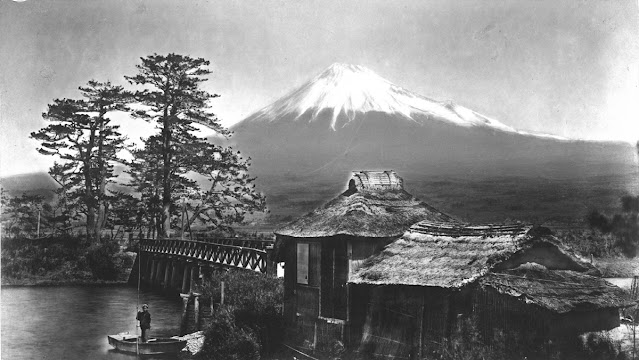JOHN BARR CLARK HOYTE (1835-1913)
Mount Rolleston (2,271m - 7,451ft)
New Zealand (South Island)
The mountain
Mount Rolleston (2,271m - 7,451ft) is a prominent peak in Arthur's Pass National Park in the South Island of New Zealand. It was named by the surveyor Arthur Dudley Dobson in 1864, who observed the peak while searching for a route through the Southern Alps to the West Coast gold fields. The name honours the then Superintendent of the Canterbury Province, William Rolleston.
While not the highest mountain in the National Park, it is well known because it can be viewed from State Highway 73 that runs through Arthur's Pass to the West Coast of the South Island. It is also popular with climbers, as it can be climbed in a day starting from Arthur's Pass township. Mount Rolleston was first climbed in 1912 by climbers H. Thomson and J. Gilligan.
Mount Rolleston can be climbed via several routes, including the Rome or Goldney Ridges, the latter of which allows access to Otira Slide, which in winter can be descended by skis.
The upper slopes of Mount Rolleston are the headwaters of several rivers, most notably the Waimakariri and several tributaries of the Otira.
The painter
John Barr Clark Hoyte was born in England, probably in London, Nothing is known of Hoyte's education and artistic training and we are reduced to the obvious deduction that he was heir to the English tradition of topographic draughtsmanship and watercolour painting. Firm drawing underlies his landscapes, making it appropriate to group him with colonial surveyor–architect artists such as Edward Ashworth, Edmund Norman and George O'Brien.
During his years in New Zealand John Hoyte travelled assiduously in search of new scenes to exploit. His pictorial exploration of the colony's principal dramatic landscapes was completed when he took a cruise circumnavigating the South Island in early 1877, exploring the coast of Fiordland with particular attention. New Zealand subjects would continue to inspire his production long after he had settled in Australia, where they shared his attention with coastal and mountain views drawn chiefly from the neighbourhood of Sydney.
Despite his apparent commercial success, however, Hoyte's standing, like that of George O'Brien, waned in the 1870s: a decade which marked a major shift in New Zealand colonial taste as the Turnerian Romantics such as Gully, J. C. Richmond and W. M. Hodgkins moved into greater prominence. They and their style were to dominate the following decades.
________________________________
2019 - Wandering Vertexes...
by Francis Rousseau
John Barr Clark Hoyte was born in England, probably in London, Nothing is known of Hoyte's education and artistic training and we are reduced to the obvious deduction that he was heir to the English tradition of topographic draughtsmanship and watercolour painting. Firm drawing underlies his landscapes, making it appropriate to group him with colonial surveyor–architect artists such as Edward Ashworth, Edmund Norman and George O'Brien.
During his years in New Zealand John Hoyte travelled assiduously in search of new scenes to exploit. His pictorial exploration of the colony's principal dramatic landscapes was completed when he took a cruise circumnavigating the South Island in early 1877, exploring the coast of Fiordland with particular attention. New Zealand subjects would continue to inspire his production long after he had settled in Australia, where they shared his attention with coastal and mountain views drawn chiefly from the neighbourhood of Sydney.
Despite his apparent commercial success, however, Hoyte's standing, like that of George O'Brien, waned in the 1870s: a decade which marked a major shift in New Zealand colonial taste as the Turnerian Romantics such as Gully, J. C. Richmond and W. M. Hodgkins moved into greater prominence. They and their style were to dominate the following decades.
________________________________
2019 - Wandering Vertexes...
by Francis Rousseau



















